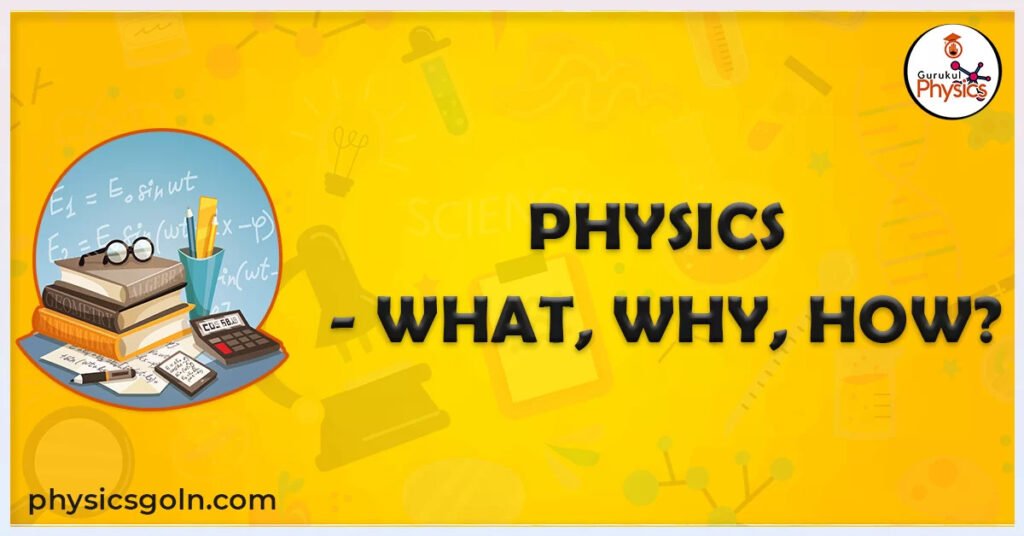Physics is a broad field of science that explores energy, matter, electricity etc as well as their interplay. Physics theories and formulae can also be used to characterize and explain the natural parameters and behaviors of a system or phenomenon.
[ Physics – What, Why, How? ]
Aspects of what became physics originated primarily from astronomy, optics, and mechanics, which had been theoretically integrated through the science of geometries. The Babylonians and Hellenistic philosophers such as Archimedes and Ptolemy established such quantitative sciences in antiquity.
One of the earliest fields of physics is classical physics. This discipline is concerned with everything that moves. Classical physics aims to explain phenomena such as planets revolving around the sun and pendulums swinging in a systematic fashion.

Thermodynamics, Quantum mechanics, optics, cosmology, nuclear physics, mechanics, vibrations and wave phenomena , relativity and electromagnetism are amongst the most foundational fields of physics.
Thermodynamics is indeed the research on the effects of changes in temperature, pressure, and volume on macroscopic physical systems, and also the transfer of energy into heat.
The quest to enhance the functionality of primitive steam engines contributed to the growth of thermodynamics. French scientist Sadi Carnot explained how Steam Engine really works and so he is called the father of Thermodynamics for his revolutionary invention.
Quantum mechanics is a fundamental physics theoretical framework for understanding the physical aspects of the environment at the level of atoms and molecules. All quantum physics, encompassing quantum chemistry, quantum field theory, quantum technology, and quantum information science, is established on this basis. Max Planck’s hypothesis is regarded as being among the founding pillars of quantum mechanics and so this German physicist is called the father of quantum mechanics.
Optics is the research of visible and non-visible light. The study of optical characteristics such as reflection, refraction, diffraction, and interference is done in optics. Ibn al-Haytham was well-known for his discoveries in optics, notably vision and light theory. He hypothesized that certain spots on the surface released light rays. The concept of light propagation implies that light existed before seeing. Light travels at the fastest rate.
Cosmology is the study of the genesis of the observable universe, its large-scale structures and dynamics, and the universe’s imminent demise, as well as the scientific laws governing these topics. Anaximander is considered as the father of cosmology.
Nuclear physics is the branch of physics involving the study of subatomic particles, their components, and interactions, as well as other varieties of nuclear matter. Ernest Rutherford’s solar system atomic model, explanation on alpha particle, beta particle and proton has helped to advance the fortune of nuclear physics a lot. Nuclear energy can be the greatest source of electricity and can solve a lot of modern world problems. But functioning a nuclear power plant is risky and can turn into a big hazardous site if not maintained with proper engineering and care. Again, nuclear weapons are used in war which refers to the most horrendous and vicious use of science.
Mechanics is a branch of mathematics and physics which investigates the interactions of force, matter, and motion among material entities. Force exerted to things cause displacements, or alterations in the orientation of a body in reference to its surroundings. Mechanics is vastly used in engineering and helped a lot to invent technologies.
Vibrations are oscillating movements that appear repeatedly over a static position in things and bodies. When vibrations interrupt a medium, the disruption spreads in the form of a wave through the medium from one point toward the next. Sound waves are also discussed here.
The concept “relativity” refers to how things are only significant in connection to other things. Einstein’s thesis that time and space are not absolute is known as relativity in physics. There are two different kinds of relativity as explained in Einstein’s theory of relativity, one is general theory of relativity and other one is special theory of relativity.
The electromagnetic force, a variety of physical interaction that originates between electrically charged particles(Positive and Negative ions), is studied in electromagnetism. James Clerk Maxwell who was a Scottish physicist is known for the development of the electromagnetic theory.
আরও পড়ুন:

